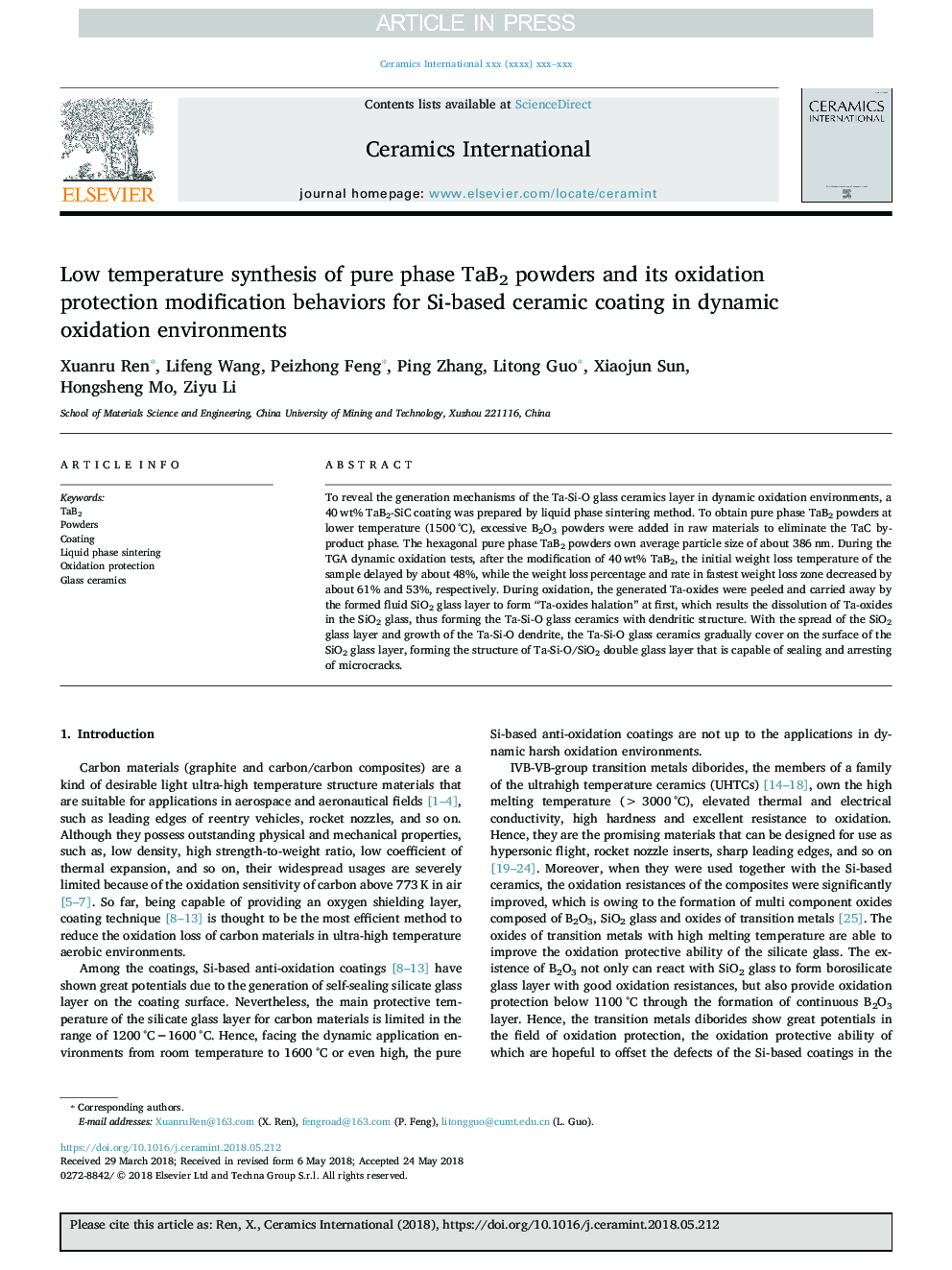| Article ID | Journal | Published Year | Pages | File Type |
|---|---|---|---|---|
| 7886378 | Ceramics International | 2018 | 9 Pages |
Abstract
To reveal the generation mechanisms of the Ta-Si-O glass ceramics layer in dynamic oxidation environments, a 40â¯wt% TaB2-SiC coating was prepared by liquid phase sintering method. To obtain pure phase TaB2 powders at lower temperature (1500â¯Â°C), excessive B2O3 powders were added in raw materials to eliminate the TaC byproduct phase. The hexagonal pure phase TaB2 powders own average particle size of about 386â¯nm. During the TGA dynamic oxidation tests, after the modification of 40â¯wt% TaB2, the initial weight loss temperature of the sample delayed by about 48%, while the weight loss percentage and rate in fastest weight loss zone decreased by about 61% and 53%, respectively. During oxidation, the generated Ta-oxides were peeled and carried away by the formed fluid SiO2 glass layer to form “Ta-oxides halation” at first, which results the dissolution of Ta-oxides in the SiO2 glass, thus forming the Ta-Si-O glass ceramics with dendritic structure. With the spread of the SiO2 glass layer and growth of the Ta-Si-O dendrite, the Ta-Si-O glass ceramics gradually cover on the surface of the SiO2 glass layer, forming the structure of Ta-Si-O/SiO2 double glass layer that is capable of sealing and arresting of microcracks.
Related Topics
Physical Sciences and Engineering
Materials Science
Ceramics and Composites
Authors
Xuanru Ren, Lifeng Wang, Peizhong Feng, Ping Zhang, Litong Guo, Xiaojun Sun, Hongsheng Mo, Ziyu Li,
